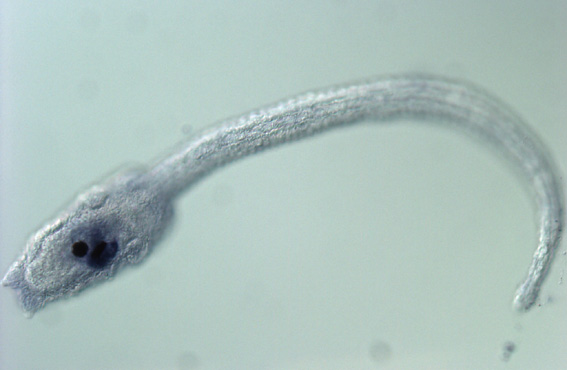

Whole-mount in situ hybridization showing photoreceptor-specific expression of Ci-opsin1, a vertebrate-type opsin gene in a tadpole larva of the ascidian Ciona intestinalis
updated on November 11, 2020
Research in this laboratory focuses on function
and cellular and molecular architecture of the central nervous system
(CNS). As a model system to study CNS, we are using primitive
chordates, ascidians. The fertilized egg of the ascidian
Ciona intestinalis develops into a tadpole larva consisting of about 2,600
cells within 18 hours. The tadpole larva of ascidians shares a basic
body plan with vertebrates. The CNS of the ascidian larva shows
organization similar to that of vertebrates. Most anterior part of
the CNS, the brain vesicle (sensory vesicle), contains two sensory
organs, the ocellus (eye-spot) and the otolith (gravity sense organ).
Posterior to the brain vesicle is the visceral ganglion containing
motor neurons. The caudal nerve cord extends from the posterior end
of the visceral ganglion to the tip of the tail. The CNS of the
ascidian tadpole contains only about 370 cells; among them, less than
100 cells are neurons. Its similarity to the vertebrate CNS and
simple organization make the ascidian larval CNS a unique model
system to study function and development of the chordate CNS.